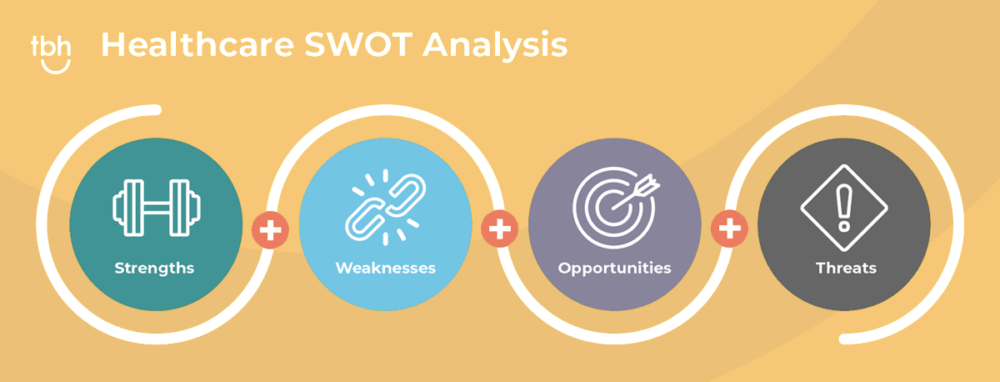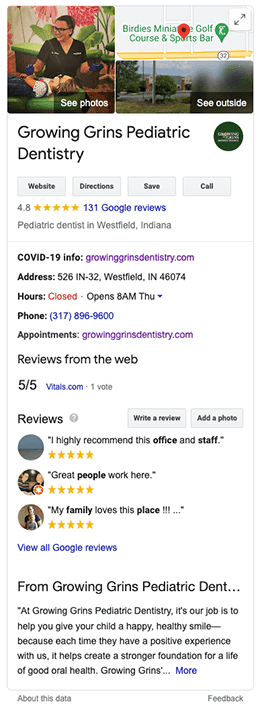Creating and executing a great healthcare marketing plan is key to attracting and engaging your patients.
Healthcare organizations used to rely on word-of-mouth to attract new patients or customers. But today, the experience a potential patient has with your healthcare business most often starts online, where they’re researching you and your competitors to decide on where to receive care.
Unfortunately, Prophet and GE Healthcare Camden Group found that 81% of consumers are unsatisfied with their healthcare experience. Their dissatisfaction leaves a lot of room for improvement and gives healthcare companies and medical practices a growth opportunity for marketing. This is where a comprehensive plan and strategy for handling healthcare marketing efforts comes into play.
Read on to learn more about why it’s vital to build a healthcare marketing plan to grow your healthcare practice.
What is a healthcare marketing plan?
A marketing plan helps you plan and build the strategy to promote your company and help it grow over time.
In the medical industry, your healthcare marketing plan will outline your marketing strategy and detail how to achieve your healthcare organization’s goals and objectives.
A well-developed healthcare marketing plan is your roadmap to execute and measure your marketing efforts over a specific period—usually one calendar year. It covers multiple marketing channels, is highly segmented, and uses online and offline tactics to drive engagement.
Benefits of having a healthcare marketing strategy in place
The healthcare market in America has become increasingly competitive, making it more critical than ever for healthcare businesses to stand out.
Did you know … in the United States in 2021, healthcare ad spending increased by 18%?
A strategic healthcare marketing plan can help you bring in new patients or clients, retain the clients you have, improve patient journeys, and increase your return on investment.
A healthcare marketing plan promotes healthcare brand visibility
Thanks to digital marketing, healthcare businesses can reach more potential clients than ever before. But to do so, you need a strong healthcare marketing plan to promote your business and attract the right people to your brand.
Good medical marketing strategies focus on consistent messaging and a recognizable look and feel (e.g., your logo, brand colors, etc.) across your online and offline properties. This helps people recognize your brand and builds trust with patients.
A healthcare marketing plan provides a competitive advantage
Developing a solid healthcare marketing plan gives your business a leg-up over competitors who treat digital marketing as an afterthought.
By investing the time upfront in building and documenting your strategic plan, you’ll know exactly what tactics to deploy and how to measure success throughout the year.
A healthcare marketing plan increases the patient base of your practice
Patients are highly likely to switch healthcare providers if they’re unsatisfied with their experience—and that includes their experience online. Meet new patients where they are with a great experience that makes it easy for them to learn more about you and schedule an appointment.
According to Google, 75% of users find information online through their smartphones to help them decide on a healthcare provider. Make sure your healthcare marketing plan outlines precisely how you plan to get in front of those patients as they search for new providers.
Healthcare marketing objectives
Different healthcare providers will have other goals for marketing. But some general objectives you may want to outline in your healthcare marketing plan include:
- Improve patient education about health and wellness
- Raise awareness about the healthcare services you provide (and why they’re important)
- Demonstrate how you deliver the best patient care
Why develop a strong healthcare brand
A thriving healthcare brand strategy informs your marketing and other communication efforts and enhances your appeal to patients in the marketplace.
What is a brand?
- A brand represents … what your group stands for, how it serves constituents, and the directional future focus of the organization.
- A brand encapsulates … how people experience your organization and reflect their POV on that experience back to the organization regarding its products, services, interactions, and conduct.
- A brand serves as … an asset. You must develop, manage, nurture, look after, and leverage a brand as you would any other investment.
Healthcare providers look alike to most potential patients and clients, and many offer essentially the same services. If you take the time to learn more about your patients’ specific needs and build your brand around addressing those needs, you’ll stand out amongst your competitors and attract more business.
5 step guide to making your healthcare marketing plan
So, how do you market a healthcare program? Here are six ways to get started.
Define your target audience
If you try to cater your marketing messages to everyone, you risk watering them down. That’s why understanding the personas in your target audience is so important in healthcare marketing. It allows you to speak the language of your patients better and promote the offerings they care about most.
Within your healthcare marketing plan, your target audience should be made up of the types of patients you would typically work with, based on demographics, location, healthcare habits, and medical needs. (You may have multiple target audiences if you have different departments or services that cater to different personas.)
Set SMART business goals
As you layout your medical marketing plan, it’s essential to decide what goals you hope to achieve. That way, as your team executes your plan, everyone knows the objectives and is on the same page.
When setting marketing goals, the “SMART” system is a great formula to follow. SMART stands for:
- Specific
- Measurable
- Achievable
- Realistic
- Time-Based
As you set goals, make sure they check all these boxes. Just be sure not to set too many goals; focus on just a few (five or fewer) that are really essential to growing the business.

Conduct a SWOT analysis
Are you wondering how to make an effective SWOT analysis for your healthcare marketing plan? It’s not as hard as it sounds.
- Strengths
- Weaknesses
- Opportunities
- Threats
The analysis part is simply what you do when you think through and document these items. Think about what your business is good at or what sets you apart (your strengths), what could use some work (your weaknesses), areas you’d like to grow or expand the business (opportunities), and competitors you keep coming up against (threats).
Document these things in your marketing plan for healthcare services and reference them whenever you’re making a strategic decision.

Plan your marketing budget
If you’re planning to run some excellent healthcare marketing programs, you’re going to need some money to do it. Planning your budget (and sticking to it) ensures that you’re able to do all the things you want throughout the year and don’t blow all the budget on one campaign.
Work with your finance team to see what is possible, then create a budget with estimates attached to all the marketing activities you have planned. While it’s good to stick to your budget as closely as possible, remember that it can be flexible as priorities change.
Establish KPIs (how you’ll measure success)
Analytics and tracking are the keys to a solid healthcare marketing strategy. Without data, the success of your marketing efforts is difficult to prove.
Your key performance indicators (KPIs) are the metrics you will track to gauge how your marketing programs perform. It’s important to lay these out in your healthcare marketing plan right from the start so that you can track them over time.
Here are some top healthcare website KPIs every marketer should be tracking:
- Average page views and time spent on pages
- Demographics
- Traffic sources and top landing pages
- Bounce rate
- Conversions
- On-site search trends
You can track these KPIs with tools like Google Analytics and other marketing software, like HubSpot, Marketo, and Salesforce Pardot.
Increase the effectiveness of your healthcare practice website
To create a seamless digital patient experience and scale the reach of your business, a great website must be the core of your healthcare marketing plan. Your website is most often the first experience a prospective new patient has with your business, and you want to make a good impression.
Healthcare website optimization
Here are three tips for building a best-in-class healthcare website that educates and converts.
1. Make sure your website is mobile responsive: Building a mobile-friendly website can give you a competitive advantage in the healthcare market. According to Smart Insights, 54.86% of today’s users perform online searches on mobile devices. That’s why it’s so critical to have a website that is just as easy to use on a phone or tablet as it is on a desktop computer.
You don’t need to change your brand, colors, or style to optimize for mobile. You need a design built to work in a mobile format and a design that uses responsive web design and scalable vector graphics technologies that recognize the user’s device and adjust the website specs to fit it. (A trusted website design and development partner can help you with this.)
2. Improve your healthcare website speed: If your website is slow, it could be causing potential patients to bounce from your page. Improving site speed has many benefits, including increasing conversions and improving user retention.
Consider these stats:
- 40% of people will bounce away from a website that takes more than three seconds to load
- As page load time goes up from one to five seconds on mobile, users are 90% more likely to leave before the page is fully loaded
- The team at the BBC discovered that—for every additional second their site took to load—they lost an extra 10% of its users
Use a speed test tool like Google’s Pagespeed Insights to monitor and improve the speed of your healthcare marketing website across all types of devices.
3. Build authority and improve SEO with your blog: Blogging is an essential content strategy that you should include in your healthcare marketing plan. Build your blog calendar by researching relevant keywords related to your audience’s search intent.
Starting with a keyword in mind can help you brainstorm relevant blog topics that you can optimize for search so patients and clients can find the issues they care about most. This adds value for your audience and makes your website rank higher in search.
It would help if you also tried to include as many relevant long-tail keywords as you can into your blog content. Long-tail keywords have lower search volume, are easier to target, and convert better.
Local SEO for healthcare practices

Localized marketing is essential for healthcare providers. It would help build a solid local presence so that people searching online for healthcare services in your geographic area will find your practice. Because of this, you are improving and maintaining your local SEO ranking should be outlined in your healthcare marketing plan.
As a healthcare marketer, you want your business to show up in the Google local traffic results, as that is where most people will click when Google displays search results.
It’s also important to keep your organization’s Facebook page and Google My Business profile up-to-date and ask for client/patient ratings to boost your SEO.
Use effective messaging in your healthcare marketing copy
When it comes to an effective healthcare marketing plan, it’s not just about what you say but how you say it.
In the healthcare industry, in particular, the language you use in marketing copy matters. This applies to the words on your website pages, blog posts, emails, printed materials, social media posts, videos, and more.
Any place you are communicating with patients or potential patients, your messaging should reflect your brand and the services you provide. If your copy is poorly written or too complicated for people to understand, it will be ineffective.
Focus on writing marketing copy that is honest, consistent, easy-to-understand, and free from typos or grammatical errors.
Identify your unique selling proposition to compete in a crowded field
Healthcare is a competitive industry, with many practices attracting new patients in the same local area. To stand out from the crowd, your organization needs a unique selling proposition.
Your unique selling proposition is what differentiates your medical practice from your competitors. It can also include a specific niche or specialty that makes your business unique.
When building your healthcare marketing plan, defining your USP can help you identify the right target markets and provide direction for your marketing efforts.
It helps you emphasize what makes your healthcare practice special and why patients should choose you over your competitors.
Healthcare marketing examples to inspire you
As you build your healthcare marketing plan, it can help to see what other providers are doing to maximize their marketing efforts and create a great digital experience for patients.
Here are some best-in-class healthcare marketing examples:
Common healthcare marketing FAQs
What are the advantages of having a healthcare marketing plan?
A strategic healthcare marketing plan can help you bring in new patients or clients, retain the clients you have, improve patient journeys, and increase your return on investment (ROI). It also helps you promote brand visibility and create a competitive advantage in your market.
What is healthcare marketing strategy?
A healthcare marketing strategy helps you execute and measure your marketing efforts. It establishes who you’ll target and the programs you’ll deploy across multiple marketing channels using online and offline tactics.
How do we develop a healthcare marketing strategy?
To develop a healthcare marketing plan strategy, you must define your target audience, set SMART business goals, conduct a SWOT analysis, plan your marketing budget, and establish KPIs. (Learn more about these steps above.)
What are the ethical issues in healthcare marketing?
Just as ethics matter in healthcare practice, they matter in how your organization is marketed. An ethical healthcare marketing plan should consist of honest and proven messaging. It should follow all advertising guidelines mandated by your local medical board and comply with HIPAA regulations.
What are the challenges to successful healthcare marketing?
Like marketing in any industry, creating an effective healthcare marketing plan comes with specific challenges. That is why measurement and tracking are essential to ensure your programs stay on the right track. Test your marketing campaigns regularly and make tweaks over time to provide the best results.
Partner with a healthcare marketing agency
To build an effective healthcare marketing plan and optimize your ROI, consider consulting with a healthcare marketing agency that can help you connect with patients across all your digital channels.
TBH Creative specializes in helping clients build and execute effective healthcare marketing plans that convert. In 2021, we were awarded six Aster Awards—five gold and one silver—for our excellence in healthcare web design and healthcare marketing.

